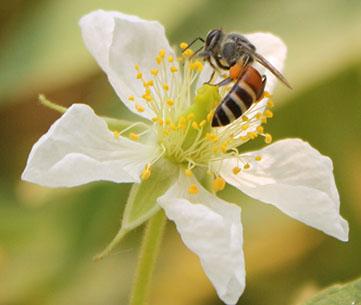The red dwarf bee (Apis florea) is a small bee species whose natural range is restricted to tropical and subtropical regions of South and Southeast Asia. This species builds simple, open nests, usually on tree branches or other sheltered sites, and forms relatively small colonies. In recent decades, the range of the red dwarf bee has expanded, partly due to human activity (e.g. commercial transport). It is now established in the Middle East and North-East Africa and is spreading towards the Mediterranean.
The red dwarf bee was first sighted in Europe, specifically in Malta, in 2024. The colony of more than 2,000 bees was discovered near a harbour, suggesting that the bees probably arrived on the island on a commercial vessel. The appearance in Malta means that we could be just a few years away from the appearance of red dwarf bees in continental Europe, which could have a number of negative consequences.
The red dwarf bee can compete with bee species native to Europe, such as the house bee (Apis mellifera) and various species of wild bees for resources such as pollen and nectar. This can reduce the population of native species, threatening the ecological balance. The decline of native bee species could have a negative impact on agricultural production, especially for crops that rely on pollination by bees. This could cause economic damage to European agriculture.
New bee species can often bring with them new pathogens and parasites (e.g. Euvarroa wongsirii, Euvarroa sinhai, Tropilaelaps clareae) . The introduction of the red dwarf bee into Europe may contribute to the spread of diseases that can damage the health of house bees and other pollinators.
In Europe, experts are monitoring the possible appearance of invasive species, including the red dwarf bee. Research is also a priority to better understand the biology of this bee species and the risks and impacts of its invasion.
Overall, the potential spread of the red dwarf bee in Europe poses a serious ecological and economic threat that requires increased attention from both the scientific community and policy makers.
The case has been discussed by EFSA's EREN network and has been identified as an emerging risk.

